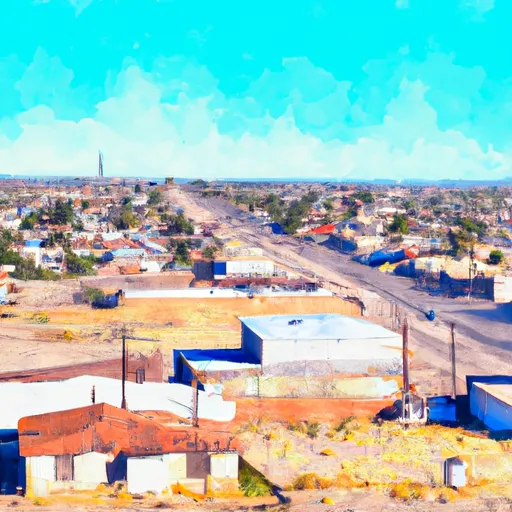-
 Snoflo Premium
Snoflo Premium
Get unlimited access to all our content
With no Ad interruptions! - Start Your Free Trial Login with existing account
Tornillo
Eden Index
Climate
8.7
•
Recreation
•
Community
1.5
•
Safeguard
3.8/10

Tornillo, Texas is a small town located in El Paso County, near the United States-Mexico border. The region experiences a desert climate, characterized by hot summers and mild winters. Summers in Tornillo can be scorching, with temperatures often exceeding 100 degrees Fahrenheit, while winters tend to be mild, with temperatures rarely dropping below freezing. The area receives very limited rainfall, averaging around 9 inches per year.
In terms of hydrology constituents, Tornillo is situated in the Rio Grande basin, and the town relies heavily on this river for its water supply. The Rio Grande plays a crucial role in the local economy, providing irrigation for agriculture and serving as a recreational resource.
Tornillo offers various outdoor recreation opportunities amidst its desert landscape. The nearby Guadalupe Mountains National Park offers hiking, camping, and bird-watching opportunities. The Rio Grande also provides opportunities for fishing, kayaking, and canoeing. Additionally, the region is known for its breathtaking sunsets and stargazing due to its clear skies. Nature enthusiasts and adventure seekers can explore this desert oasis while enjoying the unique outdoor experiences Tornillo has to offer.
What is the Eden Index?
The Snoflo Eden Index serves as a comprehensive rating system for regions, evaluating their desirability through a holistic assessment of climate health, outdoor recreation opportunities, and natural disaster risk, acknowledging the profound impact of these factors on livability and well-being.
Climate Health Indicator (CHI): 8.7
Tornillo receives approximately
224mm of rain per year,
with humidity levels near 50%
and air temperatures averaging around
17°C.
Tornillo has a plant hardyness factor of
8, meaning
plants and agriculture in this region tend to thrive here all year round.
By considering the ideal temperature range, reliable water supplies, clean air, and stable seasonal rain or snowpacks, the Climate Health Indicator (CHI) underscores the significance of a healthy climate as the foundation for quality living.
A healthy climate is paramount for ensuring a high quality of life and livability in a region, fostering both physical well-being and environmental harmony. This can be characterized by ideal temperatures, reliable access to water supplies, clean air, and consistent seasonal rain or snowpacks.
Weather Forecast
Streamflow Conditions
Rio Grande-Fort Quitman
Area Rivers
Rio Grande-Fort Quitman
Snowpack Depths
Rio Grande-Fort Quitman
Reservoir Storage Capacity
Rio Grande-Fort Quitman
Groundwater Levels
Recreational Opportunity Index (ROI):
The Recreational Opportunity Index (ROI) recognizes the value of outdoor recreational options, such as parks, hiking trails, camping sites, and fishing spots, while acknowledging that climate plays a pivotal role in ensuring the comfort and consistency of these experiences.
Access to outdoor recreational opportunities, encompassing activities such as parks, hiking, camping, and fishing, is crucial for overall well-being, and the climate plays a pivotal role in enabling and enhancing these experiences, ensuring that individuals can engage in nature-based activities comfortably and consistently.
Camping Areas
| Campground | Campsites | Reservations | Toilets | Showers | Elevation |
|---|---|---|---|---|---|
| Hueco Tanks State Historic Site | 20 | 4,527 ft |
Catastrophe Safeguard Index (CSI):
The Catastrophe Safeguard Index (CSI) recognizes that natural disaster risk, encompassing floods, fires, hurricanes, and tornadoes, can drastically affect safety and the overall appeal of an area.
The level of natural disaster risk in a region significantly affects safety and the overall livability, with climate change amplifying these risks by potentially increasing the frequency and intensity of events like floods, fires, hurricanes, and tornadoes, thereby posing substantial challenges to community resilience and well-being.
Community Resilience Indicator (CRI): 1.5
The Community Resilience Indicator (CRI) recognizes that education, healthcare, and socioeconomics are crucial to the well-being of a region. The CRI acknowledges the profound impact of these elements on residents' overall quality of life. By evaluating educational resources, healthcare accessibility, and economic inclusivity, the index captures the essential aspects that contribute to a thriving community, fostering resident satisfaction, equity, and social cohesion.

